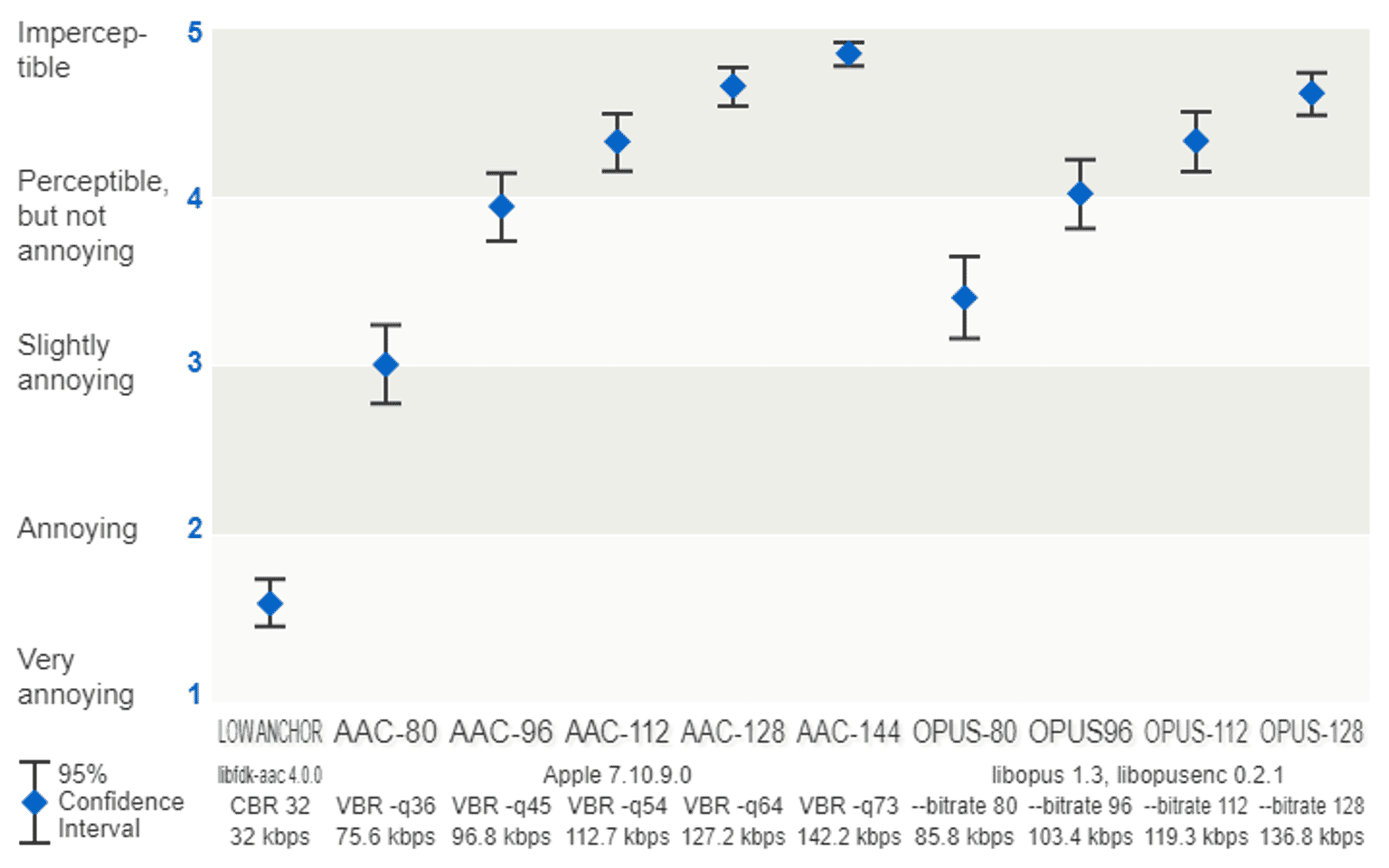
AAC ( Advanced Audio Coding ) was designed to be the successor of the MP3. It has many profiles, but the baseline profile is the Low Complexity (LC) profile.
Every single AAC devices supports AAC-LC, unlike other profiles such as HE-AAC. Which arguably makes it the 2nd best supported lossy Audio Codec on the planet after MP3.
AAC-LC, launched in 1997, is an ISO Standard with all of its patent expired according to Red Hat [2]. Making it not only Patent Un-encumbered but truly Patent Free.
It is also natively supported on all major browsers [3], Windows and MacOS.
And if we look at the listening test at [1] with results shown in the image above, which is possibly the largest and longest sampling of AAC vs Opus listening test to date, AAC-LC is head to head against Opus at 128Kbps and above.
The Industry used to call MP3 128kbps as "CD quality", that was even before LAME the MP3 Encoder. And we wanted the same "CD quality" at 64Kbps. It took more than 20 years to achieve this. But the bar is now higher, what was once "CD Quality", will now sit below AAC 80Kbps scores in the image above. And the modern benchmark for "CD quality" now is much closer to AAC 256Kbps. Which is nearly imperceptible even for Golden ears.
At 64Kbps to 90Kbps, Opus may be a slightly better option, but we dont live in a world where bandwidth and storage are as expensive as they were in the late 90s. In vast majority of cases, 128kbps should be the minimum for Audio. Even Streaming services are now pushing at 256Kbps and even Lossless.
It is sad the world continues to ignore AAC-LC, just because it is not an AOM standard or belongs to MPEG group.
[1] https://hydrogenaud.io/index.php/topic,120166.0.html
[2] https://www.phoronix.com/news/Fedora-FDK-AAC
[3] https://caniuse.com/aac